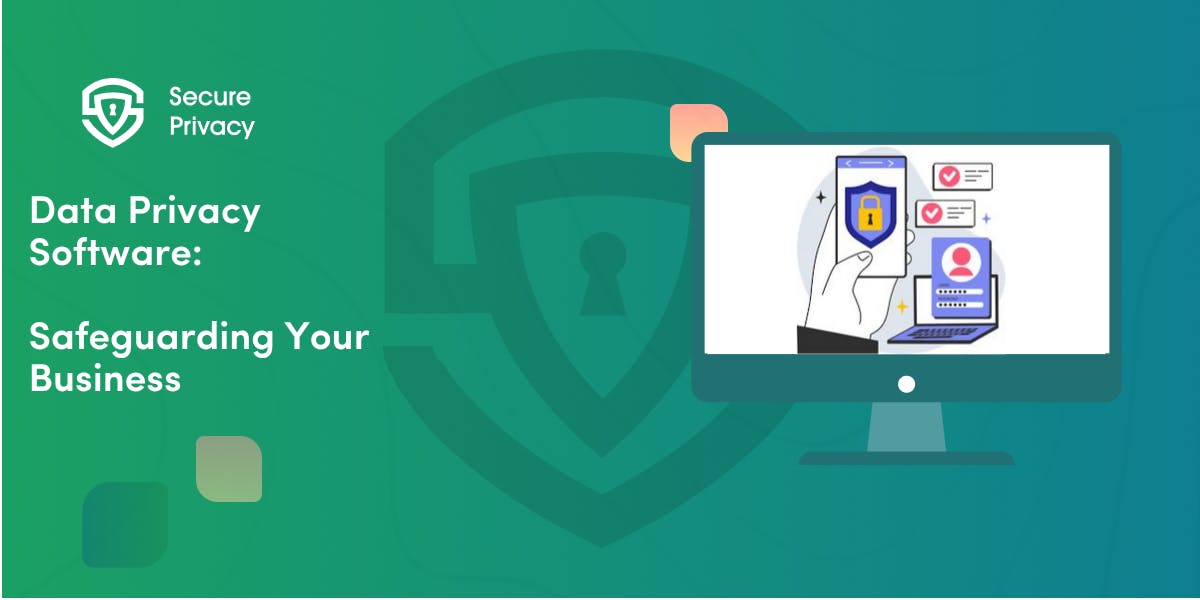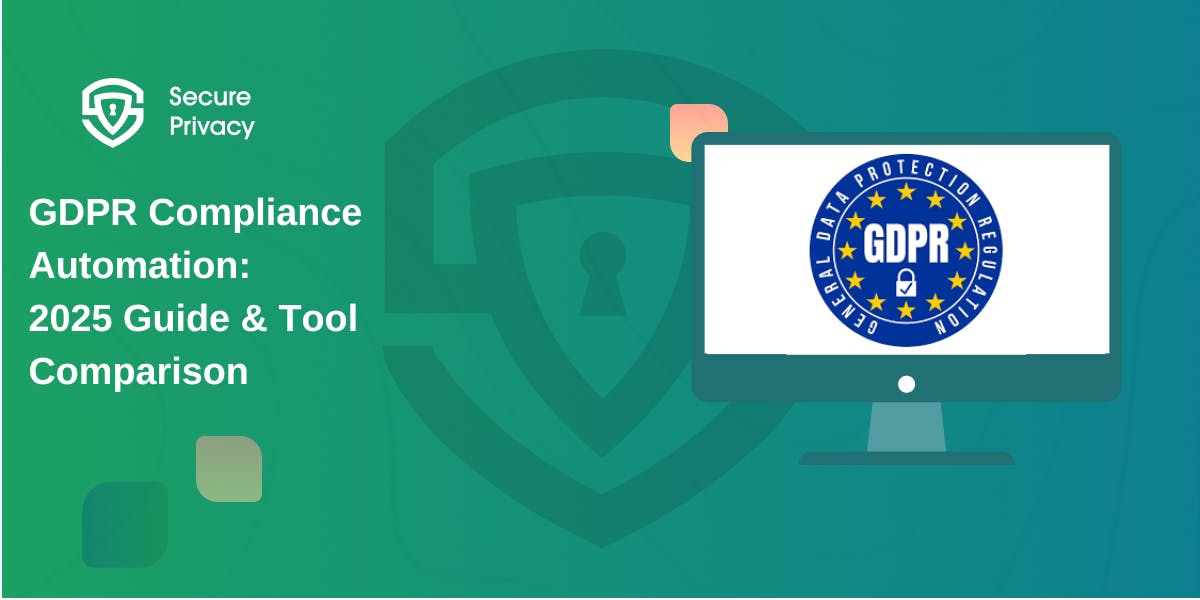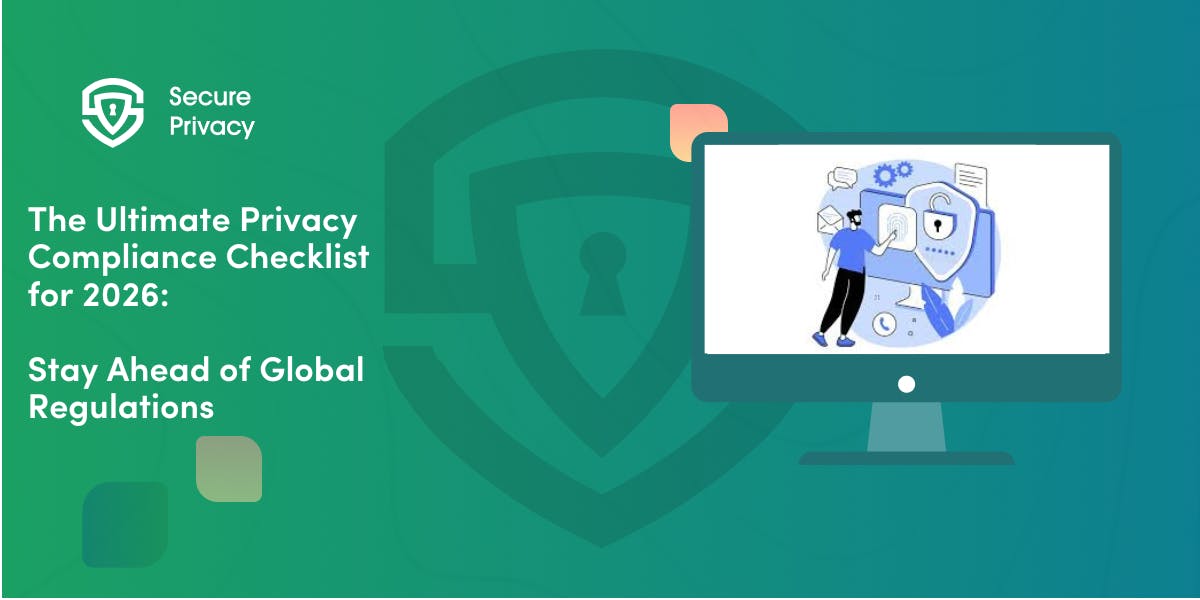2026 Privacy Compliance Roadmap: Comprehensive Checklist for Your Business
Your compliance team just received another regulatory update notification. This time it's about new CCPA cybersecurity audit requirements, EU AI Act enforcement deadlines, and state privacy laws taking effect January 1st. The regulatory landscape keeps expanding, and falling behind isn't an option when penalties reach millions of dollars.
The privacy compliance checklist for 2026 has evolved into a strategic framework that organizations must navigate carefully. Between GDPR's continued enforcement intensity, CCPA's expanded regulations, the EU AI Act's full implementation, and twenty U.S. state privacy laws now in effect, compliance has become more complex than ever. Missing critical deadlines or misunderstanding requirements can result in devastating fines, reputational damage, and operational disruption.
This comprehensive guide provides a practical roadmap for navigating the 2026 regulatory landscape. You'll discover essential compliance requirements across multiple jurisdictions, actionable implementation steps, and strategic approaches that transform compliance from a burden into a competitive advantage.
Understanding the 2026 Privacy Regulatory Landscape
The privacy compliance checklist for 2026 reflects unprecedented regulatory expansion across global jurisdictions. Organizations now face converging requirements from European regulations, California's enhanced CCPA framework, emerging AI governance mandates, and a complex patchwork of U.S. state laws affecting over 300 million Americans. This convergence creates both challenges and opportunities for organizations willing to invest in comprehensive privacy programs.
GDPR maintains its position as the global privacy standard, with enforcement agencies demonstrating increasing sophistication in identifying violations and imposing penalties. Total fines exceeded €2 billion in 2025, with regulators focusing intensely on automated decision-making, cookie compliance, and cross-border data transfers. The average penalty for major enterprises now reaches €4.8 million per violation, with some organizations facing multiple concurrent enforcement actions across different member states.
Enforcement patterns reveal that regulators are moving beyond technical compliance audits to examine actual user experiences and the practical impact of privacy controls. This shift means organizations must demonstrate not just policy compliance but genuine implementation of privacy protections that users can understand and exercise effectively.
The EU AI Act introduces the world's first comprehensive artificial intelligence regulation framework. Full enforcement begins August 2026, requiring organizations to classify AI systems by risk level, implement mandatory human oversight for high-risk applications, and maintain extensive documentation. This regulation fundamentally reshapes how organizations develop, deploy, and manage AI technologies across their operations.
The AI Act's risk-based approach means organizations must conduct thorough assessments of every AI system they use. High-risk applications in areas like employment, credit scoring, law enforcement, and critical infrastructure face the strictest requirements. Even systems currently considered low-risk may be reclassified as understanding of AI impacts evolves.
CCPA regulations undergo their most significant expansion since inception, with new requirements taking effect January 1, 2026. Organizations must implement visible opt-out confirmations for Global Privacy Control signals, conduct mandatory privacy risk assessments, and prepare for cybersecurity audit requirements with staggered deadlines through 2030.
California's enforcement agency has announced coordination with Colorado and Connecticut, signaling a new era of multi-state regulatory cooperation that effectively creates regional privacy standards.
The cybersecurity audit requirements represent a particularly significant burden, with compliance deadlines based on organizational revenue. Companies must demonstrate not just privacy policies but actual security practices protecting consumer data. This convergence of privacy and security requirements reflects growing regulatory understanding that data protection requires both legal compliance and technical safeguards.
Twenty U.S. states now enforce comprehensive privacy laws, creating complex compliance matrices for organizations operating across state lines. Indiana, Kentucky, and Rhode Island join the regulatory framework in 2026, each with distinct requirements around consumer rights, business obligations, and enforcement mechanisms. This fragmented landscape forces organizations to either implement the strictest requirements universally or develop sophisticated systems that tailor privacy controls to individual state requirements.
The challenge intensifies because state laws vary significantly in their definitions of personal information, thresholds for applicability, consumer rights provisions, and enforcement approaches. Some states provide cure periods allowing organizations to remedy violations before facing penalties, while others enable immediate enforcement action. Organizations must map these differences carefully to ensure comprehensive compliance across all jurisdictions where they operate.
The UK's Data (Use and Access) Act represents the most significant post-Brexit privacy law refinement. DUAA introduces "recognised legitimate interests" that streamline certain processing activities, updates marketing practices requirements, and modifies data subject access request obligations. These changes reflect the UK's effort to maintain high privacy standards while creating more business-friendly regulations that reduce unnecessary compliance burden.
Organizations operating in both the UK and EU must navigate the subtle differences between DUAA and GDPR. While the frameworks remain largely aligned, divergences in specific requirements mean organizations cannot simply assume UK compliance automatically satisfies EU obligations or vice versa. This requires careful legal analysis and often separate compliance documentation for each jurisdiction.
Essential GDPR Compliance Requirements for 2026
GDPR compliance in 2026 requires organizations to address five strategic pillars that demonstrate comprehensive privacy governance. Data visibility and control form the foundation, requiring accurate records of all processing activities, robust data classification systems, and clear retention schedules that automatically purge unnecessary information. Organizations must know exactly what personal data they hold, where it's stored, how it's used, and who has access to it.
The challenge of maintaining accurate data inventories grows as organizations adopt cloud services, software-as-a-service applications, and complex technology ecosystems. Personal data often flows through dozens of systems and third-party services, making comprehensive visibility increasingly difficult. Automated data discovery tools have become essential for maintaining accurate records of processing activities.
Customer rights and transparency obligations demand clear, accessible privacy notices explaining data collection purposes, processing legal bases, and third-party sharing arrangements. Data subject access requests must receive responses within one month, with systems capable of identifying and extracting all personal data across complex technology environments. Organizations must implement efficient workflows that can locate, compile, and deliver personal data without excessive manual effort.
The right to erasure, often called the "right to be forgotten," presents particular technical challenges. Organizations must be able to identify and delete personal data across all systems, including backups and archives, while maintaining legitimate business records required for legal or regulatory purposes. This requires sophisticated data management capabilities that can distinguish between data that must be deleted and information that should be retained.
Security and breach readiness requirements mandate technical and organizational measures appropriate to processing risks. Organizations must implement encryption for data at rest and in transit, maintain strict access controls, and establish incident response procedures capable of detecting and notifying breaches within 72 hours.
Third-party and global compliance creates obligations extending beyond organizational boundaries. Data processing agreements must clearly define controller and processor responsibilities, with regular vendor assessments verifying ongoing compliance. Cross-border data transfers require adequate safeguards through standard contractual clauses or adequacy decisions.
Organizational culture and governance represent the framework supporting all technical compliance measures. Privacy by design principles must integrate into product development and business processes from the earliest stages. Regular training ensures all employees understand their privacy responsibilities and can recognize situations requiring privacy team consultation.
Executive accountability has become increasingly important as regulations impose personal liability on senior leaders for privacy violations. Board-level privacy committees, dedicated privacy officers with sufficient authority and resources, and privacy metrics integrated into executive performance evaluations demonstrate organizational commitment to compliance.
Navigating CCPA's Expanded 2026 Requirements
CCPA compliance 2026 introduces critical new obligations requiring immediate implementation. Visible opt-out confirmation displays become mandatory for websites honoring Global Privacy Control signals, requiring clear visual indicators that automated privacy preferences have been respected. This requirement prevents organizations from silently accepting opt-out signals without providing users confirmation that their preferences are being honored.
The Global Privacy Control represents a significant shift in how consumers can exercise privacy rights. Rather than visiting individual websites to manage preferences, users can set a universal signal in their browsers that automatically communicates privacy choices. Organizations must implement systems that detect and honor these signals across all digital properties.
Enhanced service provider disclosures demand that privacy policies explicitly identify all service providers receiving consumer personal information. Organizations must describe the business purposes justifying each disclosure and maintain current lists as vendor relationships evolve.
Mobile application privacy policy requirements mandate that apps display easily accessible privacy policy links within application interfaces. Organizations can no longer rely solely on app store descriptions or separate website postings.
Privacy risk assessments become mandatory beginning January 1, 2026, for processing activities that present significant risk to consumer privacy or security. Organizations must conduct systematic evaluations identifying potential harms, assessing safeguards, and documenting risk mitigation strategies.
Cybersecurity audit requirements follow staggered implementation timelines based on annual revenue. Organizations exceeding specific thresholds must conduct regular audits evaluating technical and organizational security measures.
Automated decision-making technology disclosure requirements take effect January 2027, requiring organizations to provide consumers with meaningful information about automated systems affecting their rights. Organizations must implement systems enabling compliance well before the effective date.
EU AI Act Compliance Framework and Implementation
The EU AI Act compliance checklist requires organizations to first conduct comprehensive AI system inventories. Every AI application must be identified, documented, and classified according to the regulation's four-tier risk framework: prohibited systems, high-risk applications, limited-risk tools, and minimal-risk uses.
Prohibited AI systems include applications that manipulate human behavior through subliminal techniques, exploit vulnerable populations, enable social scoring by governments, or facilitate real-time biometric identification in public spaces. Organizations must immediately discontinue any prohibited uses.
High-risk AI systems face the most stringent compliance requirements. These applications affect employment decisions, access to essential services, law enforcement, or safety-critical infrastructure. Organizations deploying high-risk systems must implement comprehensive risk management frameworks, maintain detailed technical documentation, ensure data quality and governance, and establish human oversight mechanisms.
Risk management systems require ongoing processes that identify potential harms throughout AI system lifecycles. Organizations must document risk identification methodologies, implement mitigation measures, and maintain evidence of continuous oversight.
Technical documentation requirements demand extensive records covering system design specifications, data training methodologies, testing and validation results, and operational deployment parameters. This documentation must be sufficiently detailed that competent authorities can assess compliance independently.
Implementing State-Specific Privacy Laws Across the U.S.
State-specific privacy laws 2026 create compliance complexity requiring careful mapping of obligations across multiple jurisdictions. Indiana's Consumer Data Protection Act applies to businesses processing personal data of at least 100,000 Indiana residents annually or deriving revenue from selling personal data of 25,000 residents.
Kentucky's Consumer Data Act follows similar thresholds but includes a 30-day cure period provision allowing organizations to remedy violations before enforcement actions. However, cure periods are being progressively eliminated across state laws, making proactive compliance increasingly important.
Rhode Island's Data Transparency and Privacy Protection Act notably excludes cure period provisions, meaning violations can result in immediate enforcement action. This creates heightened compliance urgency for organizations operating in Rhode Island.
Multi-state compliance strategies require organizations to identify the most stringent requirements across applicable jurisdictions and implement those as baseline standards. This approach creates consistent privacy practices while ensuring compliance with varying state requirements.
Threshold analysis determines which state laws apply based on processing volumes and revenue sources. Organizations must track consumer counts by state, monitor revenue from data sales, and reassess applicability as business operations scale.
UK DUAA Compliance Steps and Implementation
DUAA compliance steps begin with comprehensive policy review and updates aligning existing GDPR frameworks with new UK provisions. The Act introduces "recognised legitimate interests" that provide clearer guidance for processing activities previously requiring complex balancing tests.
Marketing practice reassessment becomes necessary as DUAA provides new flexibilities for direct marketing while maintaining PECR compliance requirements. Organizations can leverage expanded legitimate interest provisions for certain marketing activities but must carefully document legal bases and maintain consumer opt-out capabilities.
Data subject access request optimization takes advantage of DUAA's "reasonable and proportionate" search requirements. Organizations no longer must conduct exhaustive searches for consumer data across every possible system when requests are clearly unreasonable or disproportionate.
Cookie compliance review examines new exemptions for statistical and charitable purposes. Certain analytical cookies may qualify for exemptions under DUAA provisions, reducing consent requirements for specific use cases.
International data transfer updates require review of adequacy frameworks and transfer mechanisms under DUAA provisions. Organizations transferring data between the UK and EU must ensure compliance with both frameworks.
Privacy Compliance Tools and Technology Solutions
Privacy compliance tools and templates have evolved from manual policy generators to sophisticated automation platforms addressing multiple regulatory requirements simultaneously. Leading solutions provide comprehensive capabilities spanning data discovery, consent management, vendor assessment, and regulatory intelligence.
Tool selection criteria should emphasize regulatory coverage addressing all applicable laws, integration capabilities with existing technology stacks, scalability supporting organizational growth, and automation features reducing manual compliance effort.
Building Comprehensive Privacy Governance Frameworks
Privacy governance frameworks establish organizational structures, processes, and accountability mechanisms ensuring sustained compliance. Executive leadership engagement proves essential, with board-level oversight demonstrating organizational commitment and ensuring adequate resource allocation.
Privacy governance committees should include cross-functional representation from legal, technology, security, marketing, and business operations teams. These committees establish compliance strategies, review program effectiveness, approve policy changes, and escalate significant risks.
Privacy performance metrics integrate compliance measurements with business performance indicators. Organizations should track data subject request response times, consent rates, vendor compliance assessment completion, training completion percentages, and incident response times.
Privacy expertise development requires ongoing investment in training, hiring, and external partnerships. Organizations face widespread privacy talent shortages, making internal capability development increasingly important.
Privacy-security convergence frameworks address overlapping requirements across privacy regulations and cybersecurity standards. Organizations benefit from integrated approaches rather than maintaining separate privacy and security programs.
Managing Third-Party Privacy Risks and Vendor Compliance
Third-party privacy governance addresses risks extending across entire value chains. Regulations increasingly hold organizations accountable for vendor processing activities, making systematic vendor management essential.
Vendor privacy assessment frameworks evaluate multiple dimensions including regulatory compliance capabilities, data security practices, subprocessor management, incident response procedures, and contractual privacy obligations. Organizations should develop standardized assessment questionnaires adaptable to different vendor types.
Data processing agreements must clearly define controller-processor relationships, specify processing purposes and restrictions, establish security requirements, address breach notification obligations, and provide audit rights.
Continuous vendor monitoring tracks compliance status throughout vendor relationships. Organizations should establish processes for reviewing vendor security reports, monitoring breach notifications, and conducting periodic audits.
Vendor concentration risk analysis identifies dependencies on individual vendors that could create compliance vulnerabilities. Organizations should assess alternative vendors for critical services and maintain exit strategies enabling vendor transitions.
Conducting Effective Privacy Compliance Audits
Privacy compliance audits provide systematic evaluations identifying gaps and verifying control effectiveness. Audit scope should address all applicable regulations, covering data processing activities, consumer rights implementation, vendor management, security measures, and documentation practices.
Evidence collection requires documentation demonstrating compliance with specific requirements. Organizations should gather privacy policies, consent records, data processing agreements, vendor assessments, training records, incident response logs, and data subject request documentation.
Findings documentation should clearly identify compliance gaps, assess risk levels, provide specific remediation recommendations, and establish correction timelines. Priority classifications help organizations focus remediation resources on highest-risk issues.
Follow-up processes verify that identified gaps receive appropriate remediation. Organizations should track remediation progress, validate implemented corrections, and update compliance documentation.
Preparing for Data Breach Response and Notification
Incident response procedures establish organizational capabilities for detecting, containing, investigating, and remediating privacy incidents. GDPR requires breach notification within 72 hours of discovery, while CCPA and state laws impose varying timeframes.
Breach detection mechanisms should provide early warning through security monitoring tools, automated anomaly detection, employee reporting channels, and third-party notifications. The faster organizations detect incidents, the more time they have for investigation and notification compliance.
Breach assessment frameworks evaluate incident severity, determine notification obligations, and guide response decisions. Organizations must assess the number and sensitivity of affected records, evaluate likelihood of harm to data subjects, and determine applicable regulatory notification requirements.
Notification templates pre-approved by legal counsel enable rapid communication during incidents. Templates should address regulatory requirements while providing clear information to affected individuals.
Post-incident review processes examine root causes, evaluate response effectiveness, and implement corrective actions preventing recurrence.
Taking Action on Your 2026 Privacy Compliance Journey
Privacy compliance checklist 2026 implementation requires immediate action addressing the most urgent regulatory deadlines. Organizations must prioritize CCPA's January 1st requirements, including visible opt-out confirmations and service provider disclosures. AI system inventories should begin immediately given the EU AI Act's August enforcement date.
Medium-term strategic actions focus on building sustainable compliance infrastructure. Organizations should implement privacy management platforms providing automation and continuous monitoring. Cybersecurity-privacy integration addresses converging requirements across multiple regulations.
Long-term organizational excellence requires embedding privacy throughout business culture and operations. Privacy by design ensures new products and processes incorporate protection from inception. Continuous regulatory monitoring identifies emerging requirements before deadlines create crises.
Technology investments should prioritize unified privacy management platforms addressing multiple regulations simultaneously. Automated consent management orchestrates user preferences across jurisdictions and touchpoints. Continuous monitoring systems track compliance status in real-time.
Remember that privacy compliance in 2026 represents both regulatory obligation and strategic opportunity. Organizations approaching compliance as business enablement rather than burden achieve measurable advantages including enhanced customer trust, operational efficiency, and market differentiation. The investment in comprehensive privacy programs pays dividends through reduced breach costs, improved regulatory relationships, and sustainable competitive positioning in an increasingly privacy-conscious marketplace.
Get Started For Free with the
#1 Cookie Consent Platform.
No credit card required

Data Privacy Software: Safeguarding Your Business
Your compliance team just discovered personal data scattered across fifty different systems with no clear inventory. A data subject access request arrived yesterday requiring response within thirty days, but manually searching through databases, CRM systems, and cloud storage would take months. Meanwhile, eight new US state privacy laws took effect this year alone, and you're not sure which apply to your business.
- Legal & News
- Data Protection

GDPR Compliance Automation: Complete Guide & Tool Comparison
Your privacy team is drowning in manual GDPR workflows. Data subject access requests pile up for weeks. Data mapping takes months instead of minutes. Your spreadsheet-based consent records can't scale to millions of users. Meanwhile, European regulators issued €1.2 billion in GDPR fines last year alone, and your current compliance approach can't keep pace with enforcement intensity or business growth.

2026 Privacy Compliance Roadmap: Comprehensive Checklist for Your Business
Your compliance team just received another regulatory update notification. This time it's about new CCPA cybersecurity audit requirements, EU AI Act enforcement deadlines, and state privacy laws taking effect January 1st. The regulatory landscape keeps expanding, and falling behind isn't an option when penalties reach millions of dollars.
- Legal & News
- Data Protection

